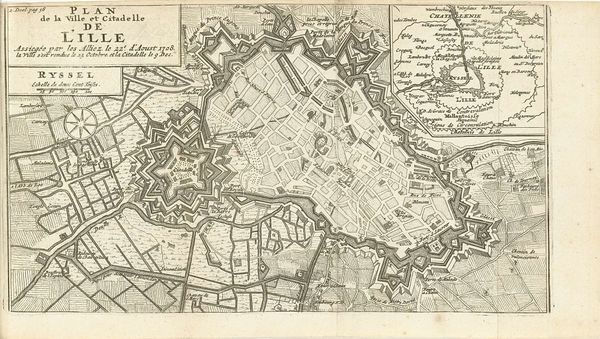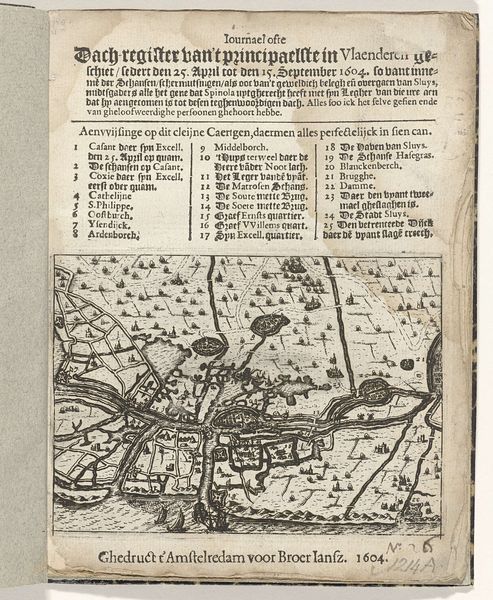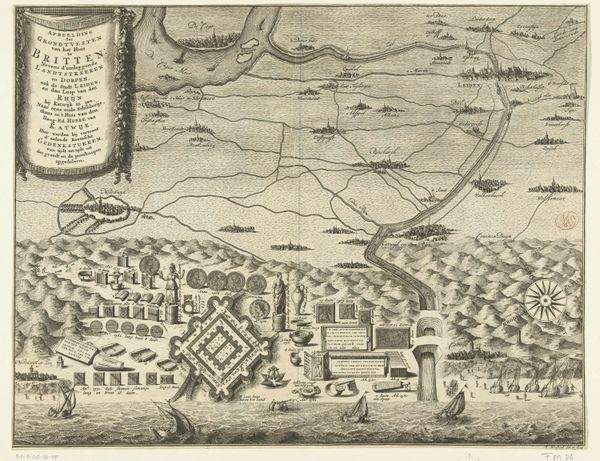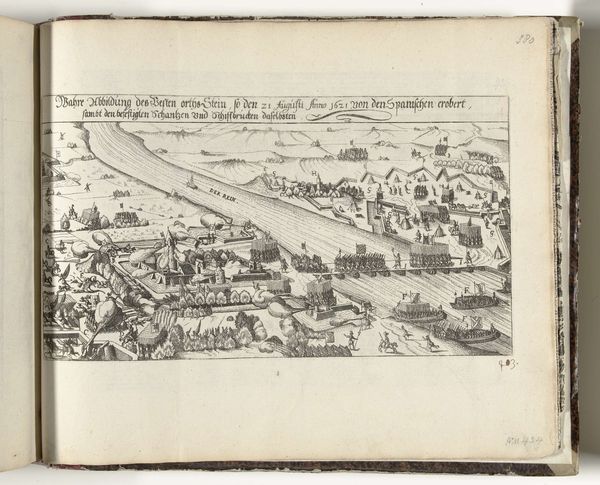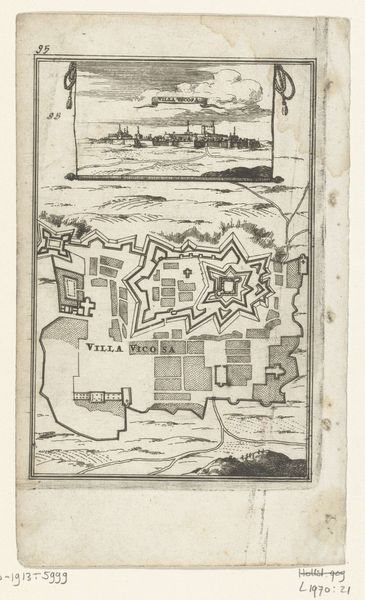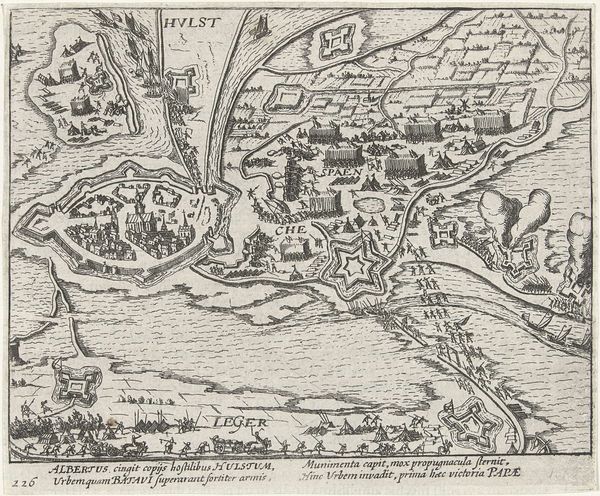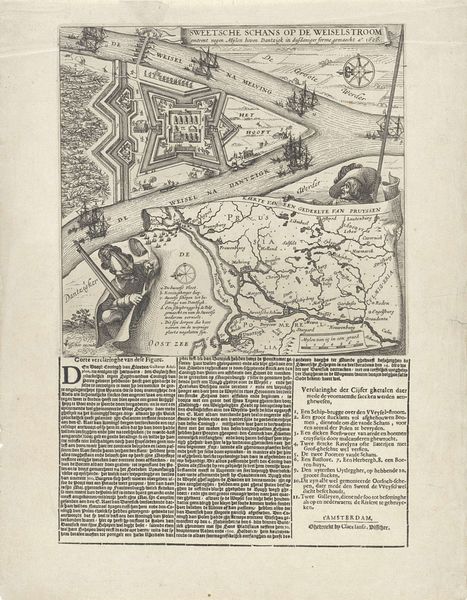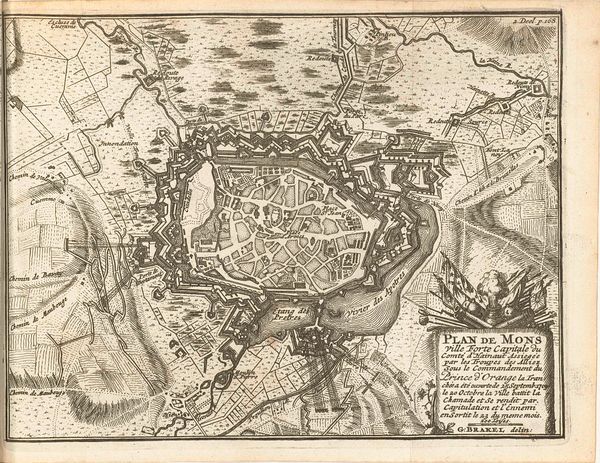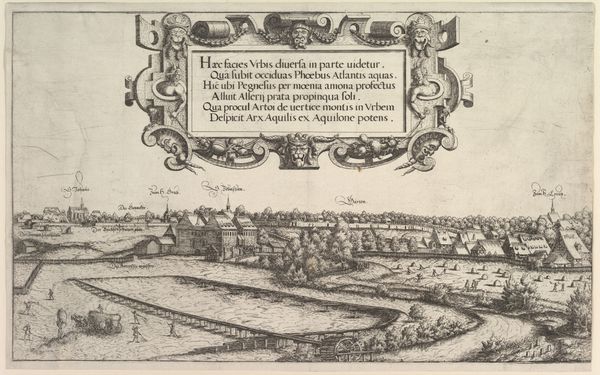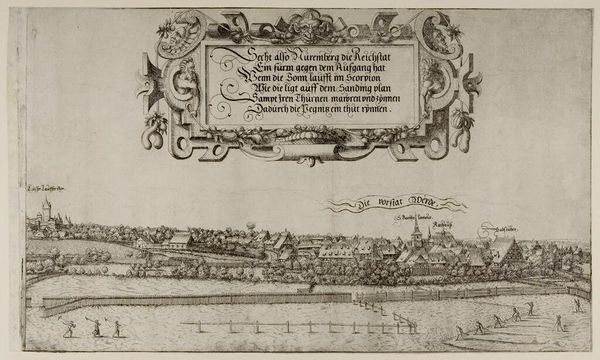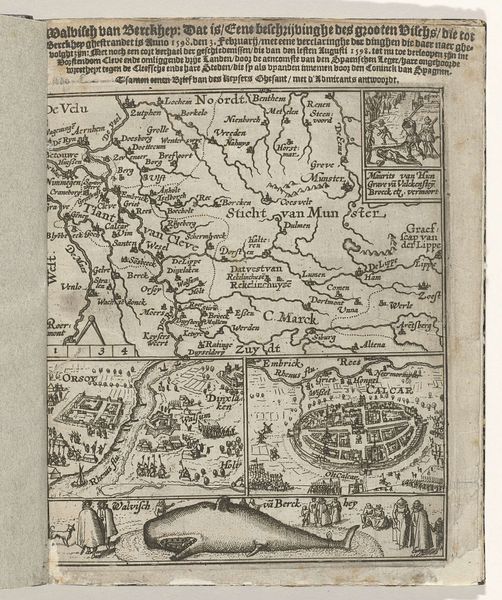
Titelblad van Historisch verhael, band 1 (dl. 2), 1621-1622 1622
0:00
0:00
graphic-art, print, paper, ink, engraving
#
graphic-art
#
dutch-golden-age
# print
#
paper
#
ink
#
cityscape
#
engraving
Dimensions: height 185 mm, width 145 mm
Copyright: Rijks Museum: Open Domain
Curator: Immediately striking is the meticulous detail, a real tapestry of textures created purely with line and tone. It has this intense, almost dizzying bird's-eye view. Editor: You're right. It's all about detail here. We're looking at the title page of "Historisch Verhael," volume one, part two, created by Claes Jansz. Visscher in 1622. It's an engraving, likely printed using ink on paper. It documents events unfolding across Europe. Curator: It is fascinating how Visscher uses these precise lines and hatching to build depth and form. He gives us two maps—cityscapes actually—of Montauban and Franckendal. It looks like these urban environments have been carefully rendered to showcase fortifications; all those linear fortifications against the curvilinear, meandering rivers that cut through it. There is even a little fleet shown in the top left! What kind of paper are we talking about here, and the dissemination of its production at the time, can we understand more about this choice? Editor: These engravings were incredibly important tools for disseminating information widely. The "Historisch Verhael" aimed to chronicle significant events across Europe, from September 1621 to April 1622. Its availability and accessibility to a growing merchant class made it a form of media and propaganda; maps, illustrations and titles could offer insights into Dutch perspectives on war and geopolitics, and consumption trends. Curator: Yes, definitely. What do you think is the impact and reach that this type of historical rendering offered its direct public? Editor: Well, Visscher's artistic and printing practices represent not only refined skill, but reflect the flourishing market for printed materials and their societal roles during the Dutch Golden Age. Visscher owned his own printing company, which could speak to both his output of original artworks and also commercial intent. The production means would allow news to spread about historical chronicles throughout regions during its historical time frame. Curator: A lot of historical background comes into play here with this single book cover, then. It’s very easy to get lost within these historical imprints. Editor: Agreed. By looking beyond the surface of composition, and understanding this engraving as part of an early form of mass media helps decode a cultural and social meaning behind its historical narrative.
Comments
No comments
Be the first to comment and join the conversation on the ultimate creative platform.

